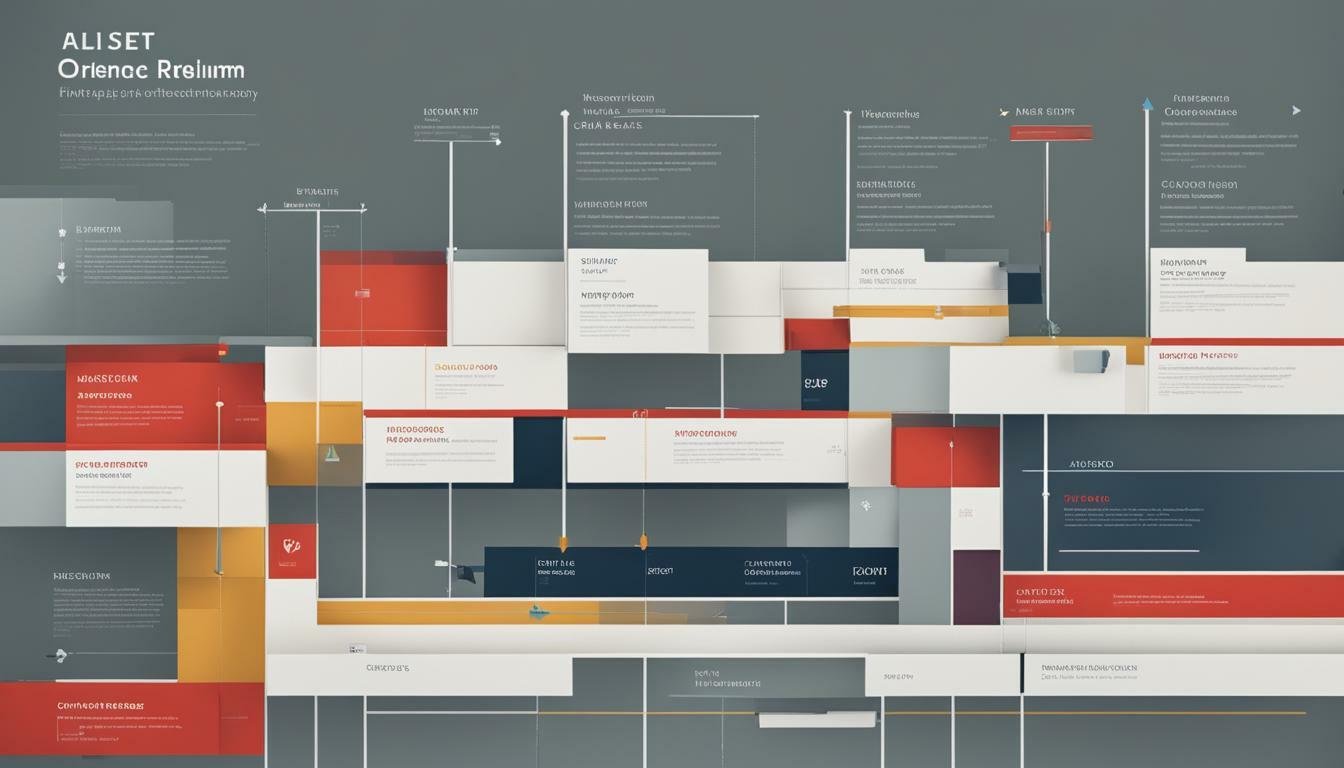When it comes to crafting a resume, one question often arises: how far back should a resume go? Determining the ideal resume length is crucial, as it can impact the overall effectiveness of your job application. Whether you’re a recent graduate, an early or mid-career professional, or a late-career expert, finding the right balance between showcasing your experience and keeping your resume concise is key.
Before delving into the specifics of resume length, it’s essential to consider your years of experience and the type of role you are applying for. This will help you tailor your resume to highlight the most relevant information.
- For students and recent graduates, including part-time jobs, internships, volunteer work, and meaningful extracurricular activities is acceptable.
- Early or mid-career professionals should focus on the most recent 10 to 15 years of work experience.
- Highlight continuing education, professional organizations, and special interests or hobbies to demonstrate your dedication to skill development.
- For late-career professionals, it is acceptable to have a two-page resume but still include only the most recent 10 to 15 years of work experience.
- Remember to keep your resume concise and focused on experiences that make you the best candidate for the job.
Factors to Consider When Deciding Resume Length
When crafting your resume, it’s crucial to consider various factors that will help you determine the optimal length. By following proper resume formatting and adhering to key guidelines, you can create a document that stands out to potential employers. Below, we explore some essential factors to consider when deciding the length of your resume.
- Relevant Experience: Focus on including experiences that are directly relevant to the job you are applying for. Highlight your accomplishments and responsibilities in these roles, as they will demonstrate your skills and expertise.
- Resume Formatting: Pay attention to your resume’s structure and layout. Use clear headings and bullet points to organize information and make it easy to read. Ensure consistency in font size and style throughout the document.
- Resume Tips and Best Practices: Keep in mind the best practices for resume writing. Tailor your resume for each job application, emphasizing the qualifications that match the specific requirements of the position. Use action verbs and quantify your achievements to make a strong impact.
- Conciseness: While it’s important to include relevant details, be mindful of keeping your resume concise. As a general rule of thumb, aim for a one-page resume unless you have significant work experience. However, if you have more than 15 years of experience, it is acceptable to have a two-page resume.
Remember, there are no strict rules on how long a resume should be, but it’s crucial to strike a balance between providing enough information and keeping it focused. Your resume should highlight your qualifications and experiences that make you the best fit for the job. By considering these factors, you can create a well-structured and impactful resume that grabs the attention of potential employers.
Resume Length Guidelines Summary:
| Years of Experience | Recommended Resume Length |
|---|---|
| 0-2 years (students or recent graduates) | One page, including part-time jobs, internships, volunteer work, and meaningful extracurricular activities |
| 2-15 years (early or mid-career professionals) | One to two pages, focusing on the most recent 10 to 15 years of work experience. Highlight continuing education, professional organizations, or special interests and hobbies. |
| More than 15 years (late-career professionals) | Two pages, including only the most recent 10 to 15 years of work experience. |
Keep in mind that exceptions can be made for high-level positions, highly relevant experience, and roles that require many years of experience. It’s important to adapt the resume length based on the specific requirements of the job you are applying for.
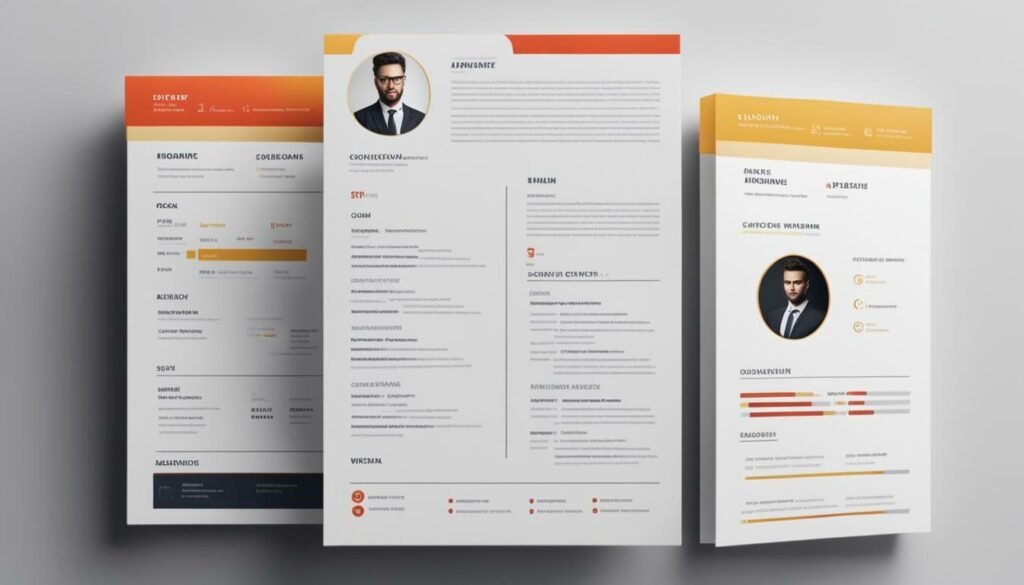
When it comes to creating a resume as a student or recent graduate, you may wonder how far back your resume should go. Here are some recommendations to help you determine the ideal resume length and what experiences to include.
If you have 0-2 years of experience, it is acceptable to include relevant part-time jobs, internships, volunteer work, and meaningful extracurricular activities. These experiences can showcase your skills, dedication, and passion in areas related to your desired field. Including them on your resume can help provide a well-rounded view of your abilities and potential.
| Experience to Include | Experience to Exclude |
|---|---|
| Part-time jobs | Irrelevant work experience |
| Internships | Unrelated volunteer work |
| Meaningful extracurricular activities | Non-job-related hobbies |
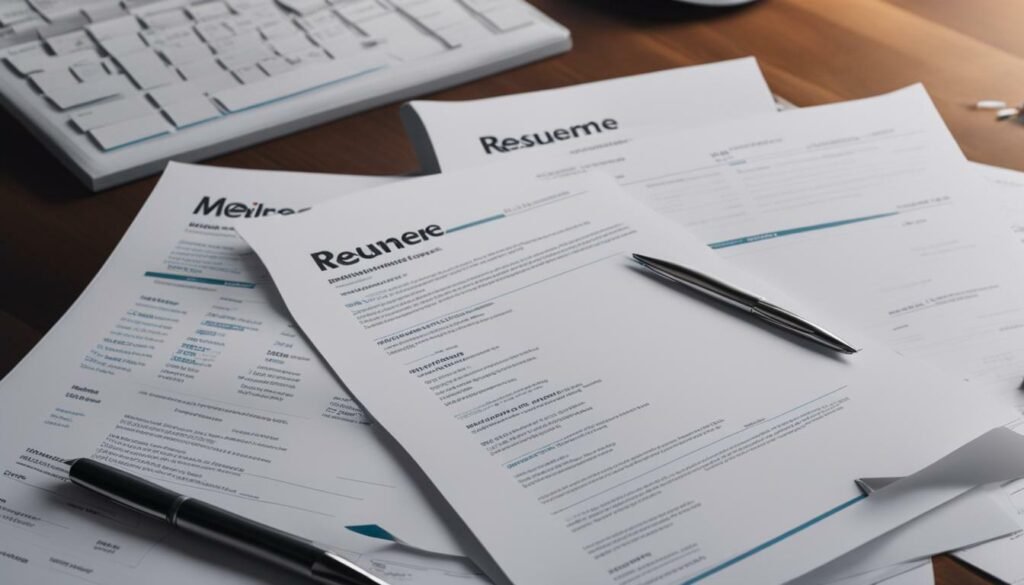
For early or mid-career professionals with 2-15 years of experience, it is recommended to focus on the most recent 10 to 15 years of work experience. This allows you to highlight your most relevant and recent accomplishments. Additionally, consider including any continuing education classes, certifications, professional organizations, or special interests and hobbies that demonstrate your commitment to ongoing development in your field.
Remember, there are no strict rules on how long a resume should be, but it is generally advised to keep it concise and focused on the experiences that make you the best candidate for the job. However, exceptions to these guidelines can be made for high-level positions, highly relevant experience, and roles that require many years of experience. In such cases, you may need to adapt the length of your resume accordingly.
Resume Length Recommendations for Students and Recent Graduates
- Include relevant part-time jobs, internships, volunteer work, and meaningful extracurricular activities
- Exclude irrelevant work experience and non-job-related hobbies
Resume Length Guidelines for Early or Mid-Career Professionals
- Focus on the most recent 10 to 15 years of work experience
- Highlight continuing education, certifications, professional organizations, and special interests or hobbies
By following these resume length recommendations, you can create a well-crafted resume that effectively showcases your relevant experience and increases your chances of securing your desired job.
Resume Length Guidelines for Early or Mid-Career Professionals
When it comes to deciding how far back your resume should go, early or mid-career professionals with 2 to 15 years of experience face a unique challenge. It’s important to strike a balance between showcasing your relevant work history and keeping your resume concise and focused.
Experts recommend focusing on the most recent 10 to 15 years of work experience for this category. This allows you to highlight your most recent achievements and responsibilities, giving potential employers a clear picture of your capabilities. Including older experiences can dilute the impact of your resume and make it appear cluttered.
In addition to your work experience, you can also emphasize your commitment to professional development by highlighting continuing education classes, certifications, or workshops relevant to your field. This shows potential employers that you are dedicated to staying up-to-date with industry trends and improving your skills.
If you have any affiliations with professional organizations or have special interests or hobbies that demonstrate your passion for your field, you can include them as well. However, be selective and choose those that directly contribute to your qualifications for the desired position.
| Resume Length Guidelines for Early or Mid-Career Professionals | Resume Experience Limit |
|---|---|
| Focus on the most recent 10 to 15 years of work experience | 2 to 15 years of experience |
| Highlight continuing education and professional development | Emphasize commitment to staying up-to-date with industry trends |
| Selectively include relevant professional affiliations, special interests, or hobbies | Choose those that directly contribute to your qualifications |
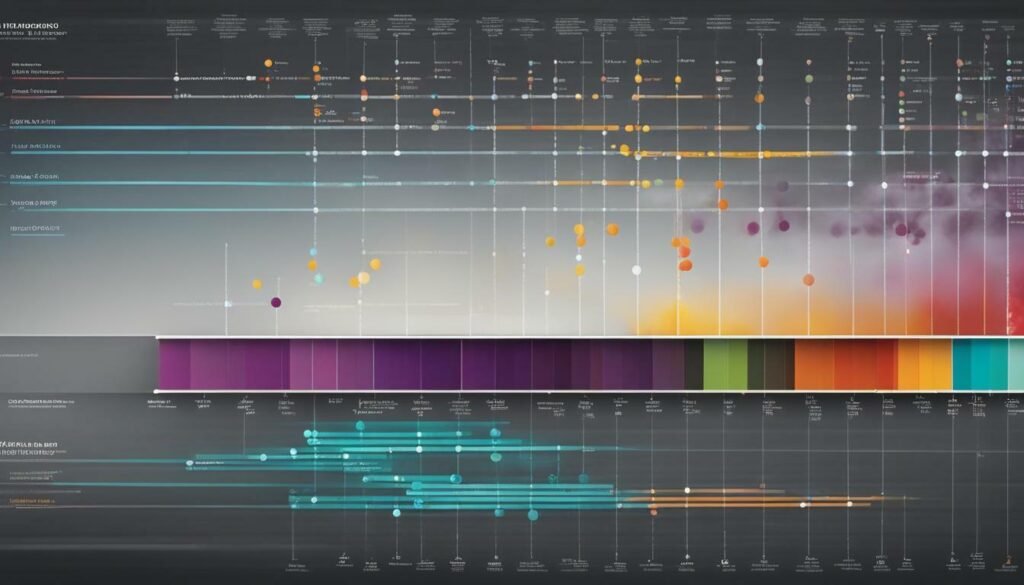
Remember, your resume is a marketing document, and its goal is to showcase your most relevant experience. By focusing on the most recent 10 to 15 years of work history and highlighting your dedication to professional development, you can create a compelling resume that stands out to potential employers.
While these guidelines provide a general framework, it’s important to adapt your resume length based on the specific requirements of the job you are applying for. Tailoring your resume to match the expectations of the hiring manager will increase your chances of securing an interview and ultimately landing your desired job.
Resume Length Recommendations for Late-Career Professionals
When you have more than 15 years of work experience and you’re a late-career professional, it’s important to present a resume that highlights your most recent and relevant accomplishments. While it is acceptable to have a two-page resume at this stage, it is still recommended to include only the most recent 10 to 15 years of work experience. This ensures that your resume remains focused and concise, allowing potential employers to quickly identify your qualifications and suitability for the job.
One way to showcase your extensive experience without including all the details is to provide a brief summary of your earlier roles and accomplishments. This can give employers a sense of your career progression and the expertise you have developed over the years. By prioritizing your recent experiences and achievements, you can demonstrate your continued growth and relevance in the industry.
Remember, there are no strict rules on how long a resume should be, but it’s essential to strike a balance between providing enough information and keeping it concise. You want to ensure that your resume highlights the skills and experiences that make you the best candidate for the job.
| Resume Length Recommendations for Late-Career Professionals |
|---|
| Include only the most recent 10 to 15 years of work experience. |
| Provide a brief summary of earlier roles and accomplishments. |
| Focus on highlighting your recent experiences and achievements. |
| Strike a balance between providing enough information and keeping the resume concise. |
Exceptions to these guidelines can be made for high-level positions, highly relevant experience, and roles that require many years of experience. In these cases, it may be appropriate to include additional work history beyond the recommended 10 to 15 years. However, it is still important to prioritize the most recent and relevant experiences to ensure that your resume remains focused and impactful.

When it comes to creating a successful resume, it’s essential to understand the best practices for resume length, organization, and formatting. By following these guidelines, you can ensure that your resume stands out to potential employers and effectively showcases your qualifications.
Resume Writing Guidelines
When writing your resume, it’s important to use concise language and focus on the most relevant information. Start with a clear and professional resume header that includes your name, contact information, and a summary statement or objective that highlights your career goals. Use bullet points to list your experience and achievements, making it easy for hiring managers to scan your resume quickly.
Resume Organization
Proper organization is key to creating an effective resume. Start with a professional summary or objective at the top of your resume to catch the reader’s attention. Follow this with sections that highlight your relevant experience, education, skills, and certifications. If applicable, include a separate section for professional affiliations or publications. Be sure to use clear headings and bullet points to make your resume easy to navigate.
Resume Length Recommendation
While there are no strict rules on resume length, it is generally recommended to keep your resume concise and focused on the most relevant information. For most professionals, a one-page resume is sufficient. However, if you have extensive experience, it may be appropriate to create a two-page resume. In either case, be sure to prioritize the experiences and achievements that align with the requirements of the job you are applying for.
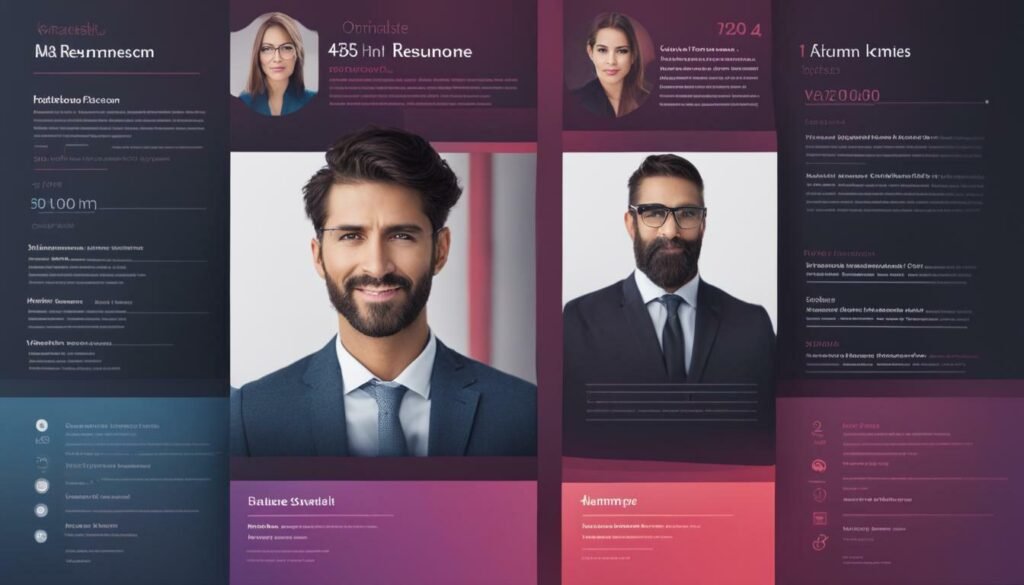
| Resume Dos | Resume Don’ts |
|---|---|
|
|
“Your resume is your first impression, so make sure it highlights your most relevant qualifications and achievements.” – Career Advisor
The Chronological Resume Format and Resume History
When crafting your resume, it’s important to consider the format that best highlights your work history and experience. One commonly used format is the chronological resume format. This format arranges your work experience in reverse chronological order, starting with your most recent position and working backward. The chronological format allows employers to easily see your career progression and assess your suitability for the role.
By organizing your resume in this way, you can effectively showcase your growth and development over time. It also helps employers quickly identify your most recent and relevant experience, which is often a crucial factor in their decision-making process.
When using the chronological resume format, it’s important to include relevant details about each job listed, such as your job title, company name, dates of employment, and a brief description of your responsibilities and accomplishments. This helps provide context for your experience and gives employers a clear understanding of your skills and qualifications.
Sample Chronological Resume
Below is a sample table that demonstrates how to structure the work history section of a chronological resume:
| Job Title | Company | Dates of Employment | Responsibilities and Achievements |
|---|---|---|---|
| Marketing Manager | ABC Corporation | 2018 – Present | Develop and execute marketing strategies, manage social media campaigns, analyze market trends, increase brand awareness |
| Marketing Specialist | XYZ Company | 2015 – 2018 | Assist in creating marketing materials, coordinate events, conduct market research, support lead generation efforts |
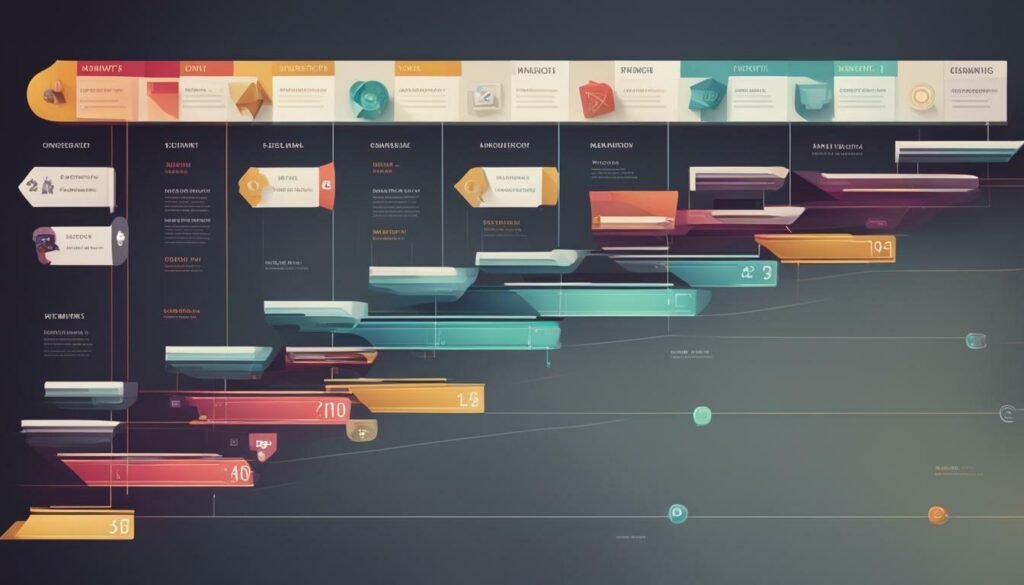
Remember, the chronological resume format is just one option, and it may not be suitable for every job seeker. Depending on your unique circumstances, such as career changes or gaps in employment, you may want to explore other resume formats, such as the functional or combination formats. These formats allow you to highlight your skills and achievements in a different way, which may better showcase your qualifications for certain roles.
Ultimately, the choice of resume format should be based on your individual situation and the specific requirements of the job you’re applying for. Take the time to carefully consider and tailor your resume to ensure it effectively communicates your experience and makes a strong impression on potential employers.
Resume Writing Tips for Determining Optimal Resume Length
When it comes to crafting an effective resume, finding the right balance between showcasing your experience and keeping the document concise can be a challenge. Here are some valuable resume writing tips to help you determine the optimal resume length:
- Focus on relevant experience: Prioritize the experiences that are most relevant to the job you are applying for. Tailor your resume to highlight the skills and accomplishments that align with the requirements of the position.
- Emphasize your work history: Your work history should demonstrate your growth and career progression. Include your job titles, company names, employment dates, and key responsibilities or achievements for each role.
- Consider the relevance of past positions: While it’s important to include your past work history, it’s also crucial to assess the relevance of each position. If a role from several years ago doesn’t contribute much to your current job search, you may choose to summarize it briefly or exclude it altogether.
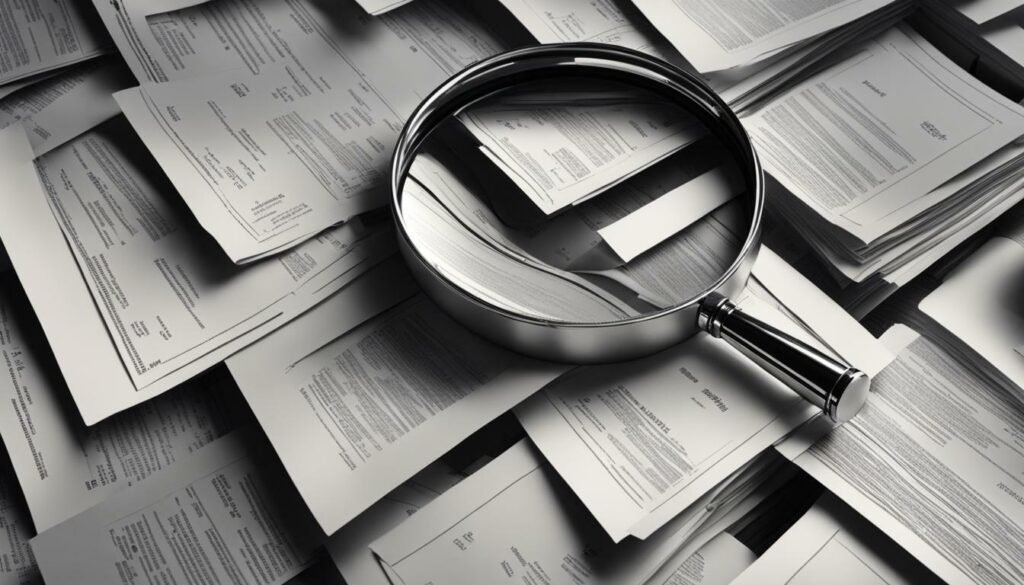
Remember, your goal is to create a resume that captures the attention of hiring managers and showcases your qualifications. It’s essential to strike a balance between providing enough information to make an impact and keeping the document concise and easy to read.
Resume Longevity and Relevance
When deciding how far back your resume should go, consider the longevity and relevance of your previous positions. If you have been in the workforce for a longer period, focus on the most recent 10 to 15 years of work experience to keep your resume up-to-date and relevant. Including recent continuing education classes, professional certifications, or other relevant activities can also demonstrate your commitment to professional growth.
Exceptions to these guidelines can be made for high-level positions or roles that require many years of experience. In these cases, it may be appropriate to include additional work history to showcase your extensive expertise. However, always prioritize the most recent experiences and achievements that align with the job you are applying for.
| Years of Experience | Recommended Resume Length |
|---|---|
| 0-2 | 1 page |
| 2-15 | 1-2 pages |
| 15+ | 2 pages |
Keep in mind that these are general guidelines, and it’s important to adapt your resume length based on your unique circumstances and the specific requirements of the job you are applying for. By carefully considering your years of experience, the relevance of your past positions, and the expectations of your industry, you can create a compelling resume that highlights your qualifications and increases your chances of securing the job you desire.
The Importance of Resume Length Criteria
When crafting your resume, it’s crucial to consider the optimal length based on your years of experience and the specific role you are applying for. The length of your resume plays a significant role in how hiring managers perceive your qualifications and can impact your chances of securing an interview. Let’s explore the key factors to keep in mind when determining the ideal resume length.
For students and recent graduates with 0-2 years of experience, it is acceptable to include part-time jobs, internships, volunteer work, and meaningful extracurricular activities. These experiences demonstrate your initiative, dedication, and relevant skills. However, it’s important to keep in mind that your resume should still be concise and focused on the experiences that make you a strong candidate for the job.
For early or mid-career professionals with 2-15 years of experience, it is recommended to focus on the most recent 10 to 15 years of work experience. Highlight your achievements and responsibilities in these roles, emphasizing your growth and development over time. Additionally, you can showcase continuing education courses, professional memberships, or special interests that demonstrate your commitment to lifelong learning.
For late-career professionals with more than 15 years of experience, it is acceptable to have a two-page resume. However, it is still recommended to include only the most recent 10 to 15 years of work experience. This ensures that your resume remains concise and relevant to the position you are applying for. Remember to focus on your most significant contributions and achievements in these roles.
It’s essential to note that these recommendations are not strict rules, and exceptions can be made based on the specific circumstances. For high-level positions, highly relevant experience, or roles that require extensive years of experience, you may need to adapt the resume length accordingly. Ultimately, the goal is to present a resume that effectively showcases your qualifications, skills, and accomplishments in a manner that resonates with hiring managers.
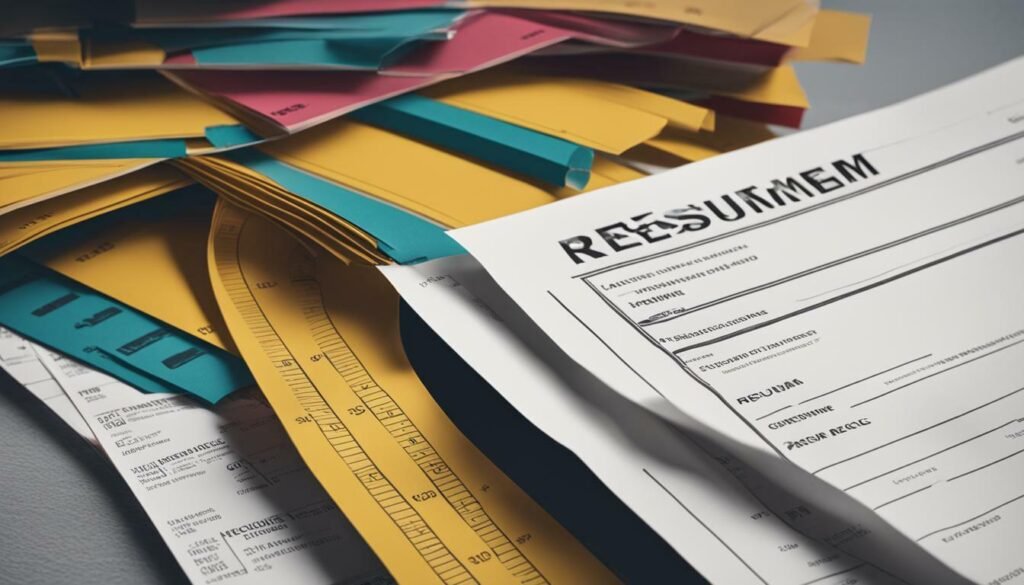
By considering the optimal resume length, you can create a well-crafted resume that highlights your relevant experience and increases your chances of landing your desired job. Keep in mind the general guidelines, tailor your resume to the specific role you are applying for, and ensure that your accomplishments and skills shine through. Remember, your resume is an essential tool in your job application process, so invest time in crafting it effectively.
Exceptions and Considerations for Resume Length
When crafting your resume, it’s important to follow general guidelines for optimal resume length. However, there are exceptions and considerations to keep in mind that can affect the length of your resume. Here are some resume format tips and resume length advice that you should take into account:
- High-level positions: If you are applying for a high-level position or an executive role, it may be necessary to include a more extensive employment history. These roles often require a deep understanding of the industry and significant experience, which can be showcased by including more years of work history on your resume.
- Highly relevant experience: If you have experience that is highly relevant to the position you are applying for, it is essential to include it, even if it goes beyond the recommended number of years. This experience can demonstrate your expertise in a specific area and make you a stronger candidate.
- Roles that require many years of experience: Some positions, such as academia or research, may require a long history of experience. In these cases, it is acceptable to have a longer resume that includes a comprehensive overview of your professional journey.
While these exceptions exist, it’s important to remember that an ideal resume length is one that remains concise and focused on the experiences that make you the best candidate for the job. Including excessive information can overwhelm employers and distract from your most relevant qualifications.
In summary, when determining the ideal resume length, consider your years of experience and the type of role you are applying for. Follow the general resume length best practices and guidelines, but also take into account any exceptions or considerations that may apply to your specific situation.

| Resume Length | Years of Experience |
|---|---|
| Students and Recent Graduates | 0-2 years |
| Early or Mid-Career Professionals | 2-15 years |
| Late-Career Professionals | More than 15 years |
Conclusion
When crafting your resume, it’s crucial to consider how far back your experience should go. By following industry guidelines and understanding the type of role you’re applying for, you can create a resume that effectively showcases your qualifications.
If you’re a student or recent graduate with 0-2 years of experience, include part-time jobs, internships, volunteer work, and meaningful extracurricular activities. For early or mid-career professionals with 2-15 years of experience, focus on the most recent 10 to 15 years of work history. Consider highlighting continuing education, professional organizations, and special interests or hobbies to demonstrate your commitment to growth and development.
For late-career professionals with more than 15 years of experience, a two-page resume is acceptable, but still, include only the most recent 10 to 15 years of work experience. Remember, there are no strict rules on resume length, but it’s advisable to keep it concise and focused on the experiences that make you the best candidate for the job. Exceptions can be made for high-level positions, highly relevant experience, and roles that require extensive years of expertise.
By tailoring your resume to the specific requirements of the job and showcasing your most relevant experience, you increase your chances of landing your desired position. Good luck with your job application!
FAQ
How far back should a resume go?
The number of years to include on a resume depends on your years of experience and the type of role you are applying for. For students or recent graduates (0-2 years of experience), it is acceptable to include part-time jobs, internships, volunteer experiences, and meaningful extracurricular activities. For early or mid-career professionals (2-15 years of experience), it is recommended to focus on the most recent 10 to 15 years of work experience. Late-career professionals (more than 15 years of experience) can have a two-page resume but should still include only the most recent 10 to 15 years of work experience.
Are there strict rules on how long a resume should be?
There are no strict rules on resume length, but it is generally advised to keep it concise and focused on the experiences that make you the best candidate for the job.
What should I include on my resume as a student or recent graduate?
As a student or recent graduate, you should include part-time jobs, internships, volunteer experiences, and meaningful extracurricular activities that are relevant to the role you are applying for.
How many years of work experience should I include on my resume as an early or mid-career professional?
As an early or mid-career professional, it is recommended to focus on the most recent 10 to 15 years of work experience. You can also highlight continuing education, professional organizations, or special interests and hobbies that demonstrate your dedication to developing your skills.
Can I have a longer resume if I have more than 15 years of experience?
Late-career professionals can have a two-page resume, but it is still recommended to include only the most recent 10 to 15 years of work experience.
Are there exceptions to the resume length guidelines?
Exceptions to the guidelines can be made for high-level positions, highly relevant experience, and roles that require many years of experience. In such cases, you may need to adapt the resume length to adequately showcase your qualifications.
